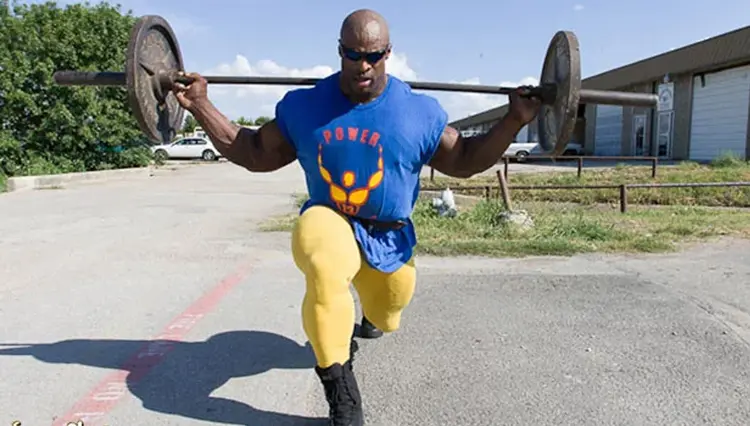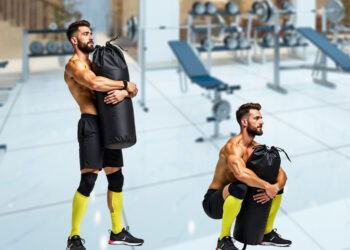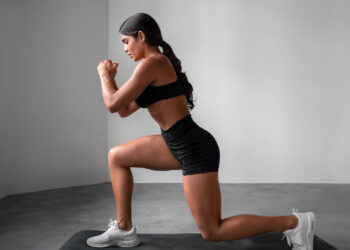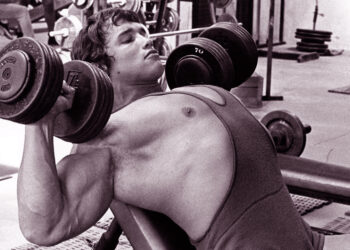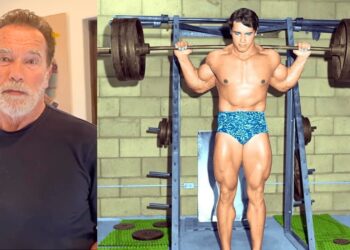It doesn’t matter what you are training for. You need to work your legs hard, heavy, and often. Leg training ensures that you develop a well-balanced physique, and, if you play sports, strengthening your legs will have a massive impact on your performance.
There are lots of different leg exercises to choose from, and almost all of them have merit. But, two of the most popular and commonly performed are squats and lunges.
These exercises work more or less the same muscles, which makes them seem like they are interchangeable. But they are also different enough that, in some cases, one may be better for you than the other.
In this article, we’re going to explore the differences and similarities of these two classic lower body exercises and reveal some variations of each one so that you can choose the right one for your goals.
Squats 101
The squat is often called the king of exercises. Entire workouts have been built around this classic exercise, such as the famous 20-rep squat routine. It’s a cornerstone of a lot of athletes’ training programs, the first discipline contested in powerlifting competitions, and a leg-building staple for most bodybuilders.
The squat is a compound exercise, which means it works several joints and muscle groups at the same time. The main muscles involved in squats are:
Level Up Your Fitness: Join our 💪 strong community in Fitness Volt Newsletter. Get daily inspiration, expert-backed workouts, nutrition tips, the latest in strength sports, and the support you need to reach your goals. Subscribe for free!
- Quadriceps – quads for short, these are the muscles on the front of your thighs. Their primary role is the extension of the knee joint.
- Hamstrings – located on the back of your thigh, the hamstrings are responsible for knee flexion and, in squats, hip extension.
- Gluteus maximus – also known as your glutes, this muscle extends your hip joint.
- Adductors – the collective term for the muscles on the inside of your hips and thighs. During squats, the adductors help stabilize your hips by preventing your thighs from splaying outward. The wider your squat stance, the more active these muscles are.
- Abductors – the collective term for the muscles on the outside of your hips. During squats, this muscle group helps stabilize your hips by stopping your knees collapsing inward.
- Erector spinae – basically the muscles of your lower back, these muscles work to keep your torso upright during squats.
- Core – the collective term for the muscles that make up your midsection. Your core contracts inward to increase intra-abdominal pressure, which stabilizes your spine from within.
While squats are most definitely a lower body exercise, your upper body gets in on the act too. Resting and holding a heavy barbell on your back requires and develops upper body strength as well as your legs. Because of this, squats are often thought of as a total body exercise.
Squat benefits
Squats are one of the best “bang for your buck” exercises around. By that, we mean they offer a huge range of benefits. Those benefits depend on the type of squat performed, the sets, reps, and the amount of weight you use, and how often you do this exercise, but the main ones are:
- Increased muscle size – squats are proven leg-builders
- Greater strength – if you want strong legs, you gotta squat!
- Improved power – squats can help you run faster, jump higher, and kick harder
- Increased testosterone and growth hormone production (1)
- Improved hip mobility
- Bigger, stronger glutes
- Improved functional strength to make everyday tasks easier
- Fat loss
- Increased fitness
- Increased bone density
How to do squats
To enjoy the benefits listed above, you must squat properly. This is especially true when squatting heavy weights. There are lots of squat variations, covered in the next section, but they all share certain commonalities.
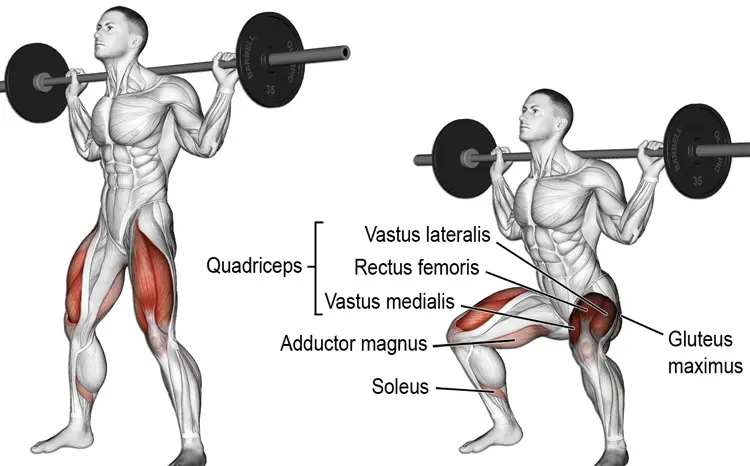
Here are the main technique tips you need to consider when doing any type of squat.
- Stand with your feet between shoulder and hip-width apart. Turn your toes slightly outward, so they’re pointing in the same direction as your knees.
- Stand up straight and look straight ahead.
- Brace your abs to stabilize your spine.
- Push your hips back and bend your knees. Squat down until your thighs are about parallel to the floor. Go deeper if your knee health and flexibility allow.
- Do not allow your lower back to round and make sure your knees do not roll inward or fall outward.
- Keep your heels pressed firmly into the floor.
- Do not let your knees travel forward beyond your toes.
- Stand back up, reset your core, and repeat.
Squat Variations and Alternatives
There are lots of squat variations, as well as exercises that are very similar. Here are the main ones you can use to add variety to your workouts.
| Bodyweight options | Options with weights | Machines/equipment |
| Bodyweight squat | Barbell back squat | BOSU squat |
| Squat jump | Barbell front squat | Box squat |
| Pistol (1-legged) squat | Overhead squat | Smith machine squat |
| Hindu squat | Barbell hack squat | Hack squat machine |
| Plié squat | Weighted squat jump | Leg press machine |
| Sissy squat | Zercher squat | TRX squat |
| Booty band squat | Trap bar squat | Squat with chains/bands |
| Goblet squat | ||
| Dumbbell squat | ||
| Hip belt squat | ||
| Box squat |
With so many squat variations to choose from, there is no reason to exclusively use barbell back squats. While this is the most well-known squat exercise, it’s just one of many. Liven up your lower body workouts with any of these alternatives.
Lunges 101
Lunges are a unilateral or single-leg exercise. They involve stepping out into a split stance and bending your legs. How are lunges a single-leg exercise when you are using both legs at the same time? The main reason is that most of the work is being done by your front leg. The back leg is only acting as a helper/stabilizer.
Like squats, lunges are a very functional exercise, and closely replicate walking and running. They’re a compound exercise, and that means they involve your entire lower body.
Because lunges involve quite a lot of balance and coordination, they are generally not done with really heavy weights. Instead, they’re usually trained using light to moderate weights and moderate to high reps. This means they’re not so good for building maximum strength but can be useful for developing muscle size and endurance.
Lunges work the same muscles as squat, albeit one leg at a time. Those muscles are:
- Quadriceps
- Hamstrings
- Gluteus maximus
- Adductors
- Abductors
- Erector spinae and core – but only when using an external load, such as a barbell or dumbbells
Lunge benefits
Like squats, lunges are a very beneficial exercise. There are lots of reasons to include lunges in your lower body workouts.
The main advantages and benefits of this exercise are:
- Improved balance
- Better coordination
- Increased hip mobility
- Good for all sports, especially those that involve running
- Can be easier on the knees than squats
- Don’t need as much weight to be effective
- Bigger, stronger glutes
- Useful for fixing left-to-right imbalances
- Fitness and fat loss
- Increased muscle size and endurance
- Improved knee and hip stability
How to do lunges
Despite typically using less weight than squats, it’s still important that you lunge correctly to get the most from this exercise while keeping your risk of injury as low as possible. Lunges involve more balance and coordination than squats, which means, for some exercisers, they are a little harder to master.
Level Up Your Fitness: Join our 💪 strong community in Fitness Volt Newsletter. Get daily inspiration, expert-backed workouts, nutrition tips, the latest in strength sports, and the support you need to reach your goals. Subscribe for free!
There are lots of different types of lunges to choose from, but most share the following instructions.
- Stand with your feet together and your arms by your sides. Look straight forward.
- Take a large step forward, keeping your feet about hip-width apart.
- Bend both legs and lower your rear knee down to about an inch from the floor. Do not let it touch down.
- Keep your front shin vertical and your knee behind your toes.
- Your torso should be upright or leaning forward slightly at the hips. Do not round your lower back.
- Drive your front foot into the floor and push yourself back up into the starting position.
- Do your next rep leading with the same leg or the opposite leg as preferred.
Lunge Variations and Alternatives
There are lots of lunge variations and exercises that are just as beneficial. Here are the main ones you can use to keep your workouts fresh and interesting.
| Bodyweight options | Options with weights | Machines/equipment |
| Forward lunge | All of the bodyweight versions can be done with a barbell on your back or dumbbells in your hands |
Smith machine lunges |
| Backward lunge | TRX lunges | |
| Lateral lunge | Bulgarian split squats | |
| Walking lunge | Deficit lunges | |
| Lunge jumps | ||
| Split squats | ||
| Split squat jumps | ||
| Step-through lunges |
As with squats, there are lots of different lunge variations to choose from. Each one offers advantages and benefits. It’s ok to have favorites, but, in a lot of cases, it’s the ones you find hardest that are the most effective! Use the exercises on this list to make your workouts both varied and productive.
Squats vs. Lunges for Beginners
Although squats allow you to lift more weight than lunges, squats are also a more straightforward exercise to learn. With your feet side by side, balance is much less of an issue, and that means you’re free to focus on things like not rounding your lower back and building some basic mobility and strength.
That said, with just a few squat workouts under your belt, you should soon be ready to try doing lunges, albeit without any extra weight.
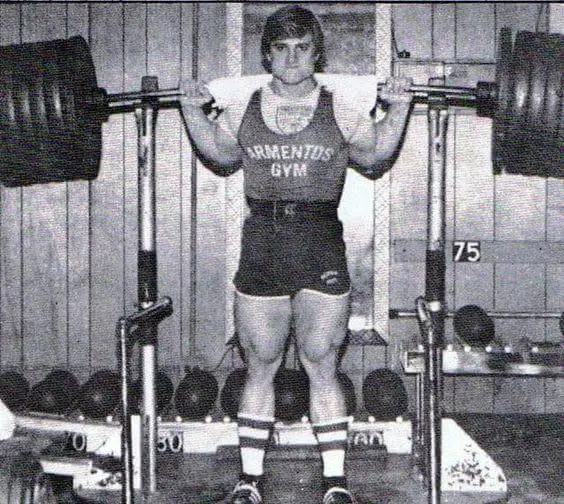
Squats vs. Lunges for Building Strength
Squats are better for building strength than lunges. Why? Balancing is easier with squats, and that means you should be able to lift more weight, and it’s lifting heavy weights that increase strength. If you lose your balance during heavy lunges, you could call over and hurt yourself. This is much less likely during squats.
Squats vs. Lunges for Muscle Mass
Squats and lunges can help you build muscle mass. Because of this, you should probably include both of these exercises in your bodybuilding leg workouts. But, for best results, do squats first and lunges afterward. Squats allow you to lift heavier weights and doing lunges first could negate this advantage. Use lunges as a finishing exercise after you’ve done your heavy-duty squats.
Squats vs. Lunges for Athletes
Most sports involve single-leg movements – such as running. In fact, it’s hard to think of more than a couple of entirely bilateral sports. Because of this, athletes should build their basic strength with squats but include plenty of lunge variations to maximize sports performance. In short, if you run, you should also lunge.
Squats vs. Lunges for People with Knee Pain
Squats and lunges can put a lot of stress on the knee joint. This is especially true for deep squats and forward and walking lunges. If you have knee pain, try doing box squats to reduce your range of motion, and switch to reverse lunges, both of which are easier on your knees.
If you have knee pain, you may need to experiment with both these exercises to find the one that’s the least painful. Because lunges make light weights feel heavier, and can also help improve knee joint stability, for many, they’ll be better than heavy squats.
Read also: How To Build Big, Functional Quads Without Knee Pain
Squats vs. Lunges for Glutes
Squats and lunges are good for glute development. The deeper you squat, the better squats are for your glutes. All types of lunges are very glute-centric. Make lunges even better for your glutes by adding a deficit. Squat onto or off a 4-8” platform to increase your range of motion and, therefore, glute recruitment.
Leg Day Workout Using Squats and Lunges
Not sure how to combine squats and lunges into a workout? No problem – here’s one to try. We’ve combined a couple of squat and lunge variations with a few other basic exercises to work your legs from all angles.
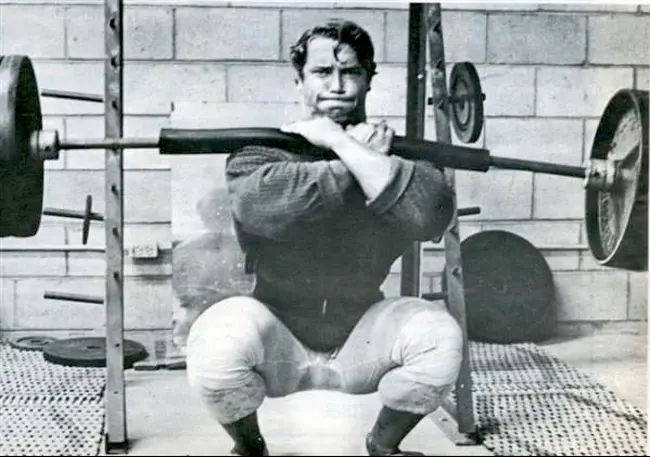
Remember to warm up before working out by doing a few minutes of light cardio, followed by some easy stretching and mobility exercises. Finish off your warmup with a couple of sets of bodyweight squats and lunges.
Use a weight that makes the last 2-3 reps of each set challenging but not impossible to complete in good form. If you are a beginner, do just two sets of each exercise. But, to make the workout harder, do all four sets.
| Exercise | Sets | Reps | Recovery | |
| 1 | Barbell back squat | 2-4 | 4-8 | 2-3 minutes |
| 2 | Dumbbell reverse lunges | 2-4 | 8-12 | 60-90 seconds |
| 3 | Romanian deadlifts | 2-4 | 8-12 | 60-90 seconds |
| 4 | Goblet squats | 2-4 | 8-12 | 60-90 seconds |
| 5 | Walking lunges | 2-4 | 8-12 | 60-90 seconds |
| 6 | Leg curls | 2-4 | 8-12 | 60-90 seconds |
| 7 | Standing calf raises | 2-4 | 12-15 | 60-90 seconds |
Wrapping up
When comparing lunges vs. squats, there is no clear-cut winner. Both of these exercises have value, benefits, and even drawbacks. The right one really depends on your goals. For brute strength and building muscle and might, squats are probably your best choice.
In contrast, if you are interested in balance, sports performance, and mobility, lunges maybe your best option.
But that doesn’t mean you should choose just one of these exercises. Instead, you should emphasize one over the other, while including both in your workout program. You don’t need to pick one and forget the other. Do both!
But, whichever one you do, make sure you use good form and also do your best to increase the load or the number of reps you do week by week. If you don’t, you may find yourself stuck in a workout rut as your progress grinds to a halt.
So, there is no clear winner in the battle of squats vs. lunges – do them both, emphasizing the one that is best for your main training goal.
References:
- PubMed: Effects of heavy-resistance training on hormonal response patterns in younger vs. older men https://pubmed.ncbi.nlm.nih.gov/10484567/



